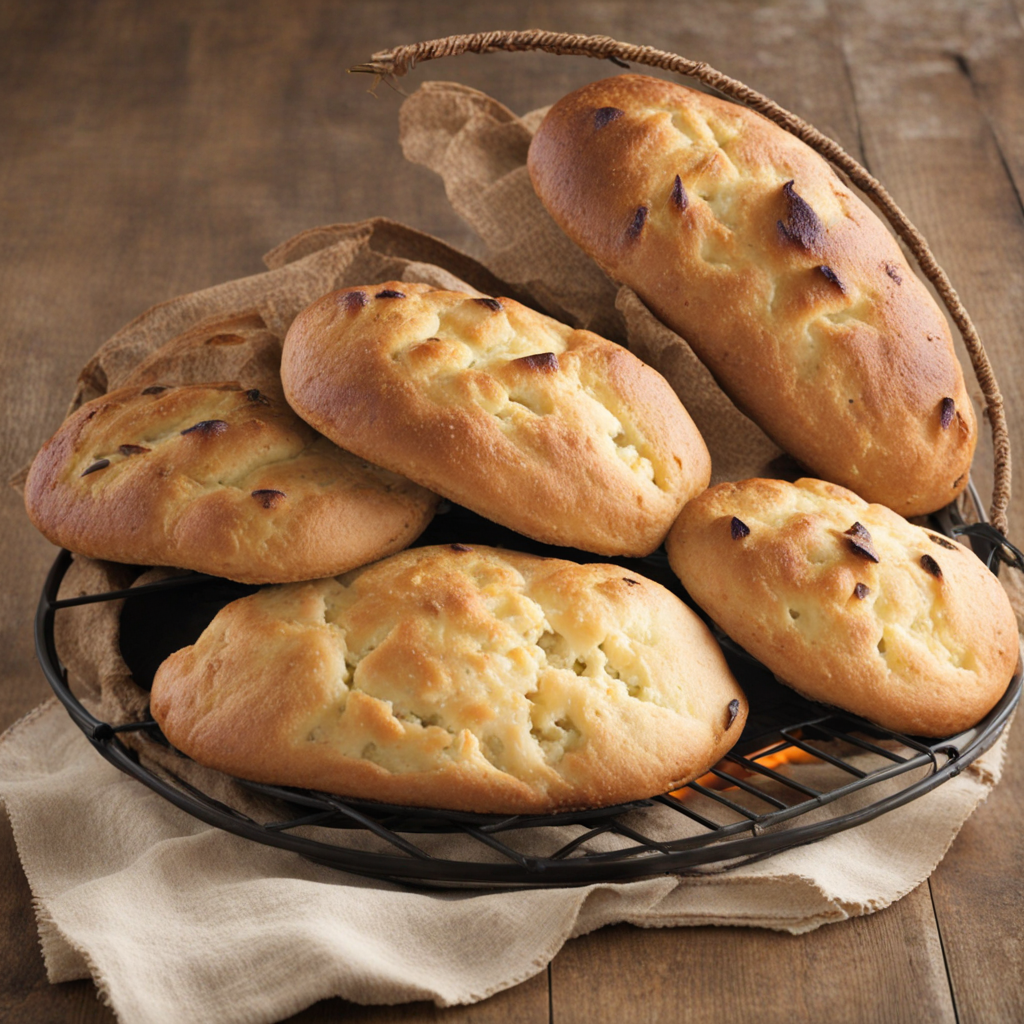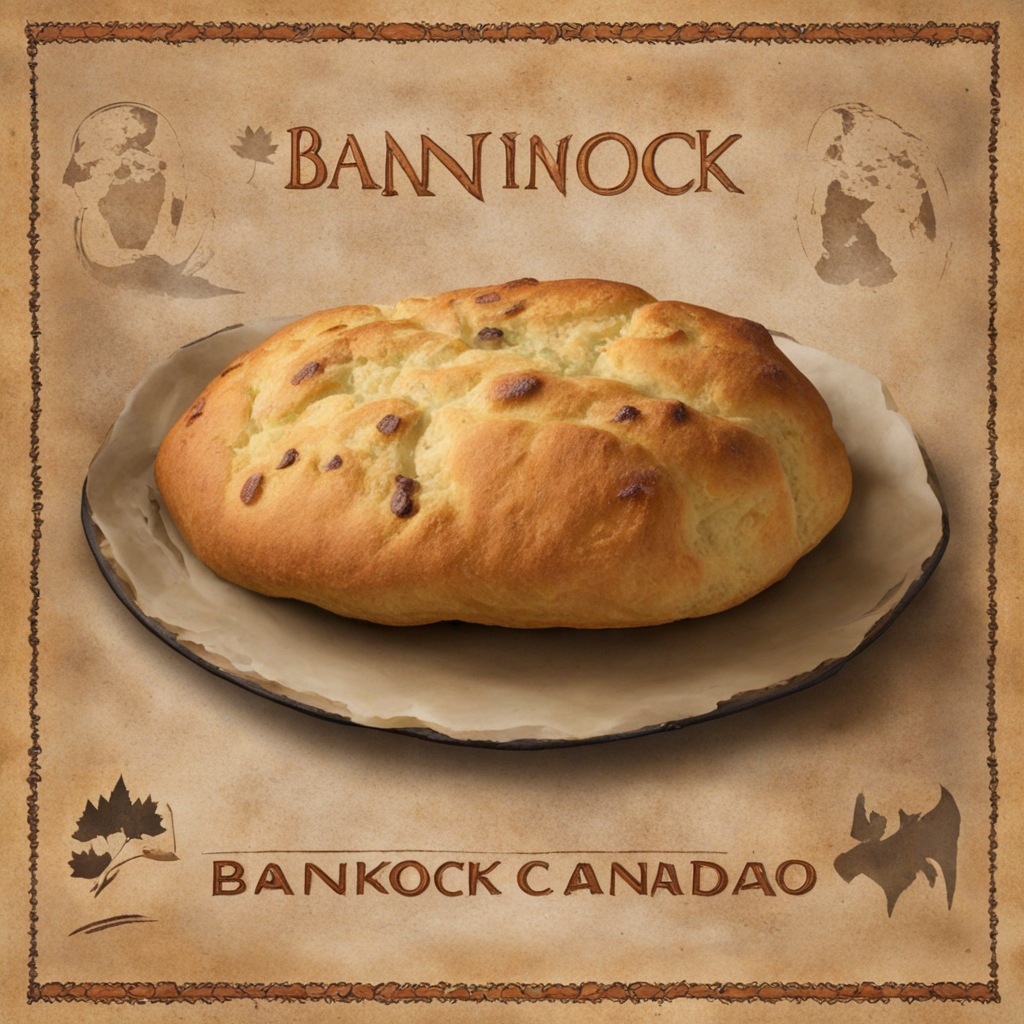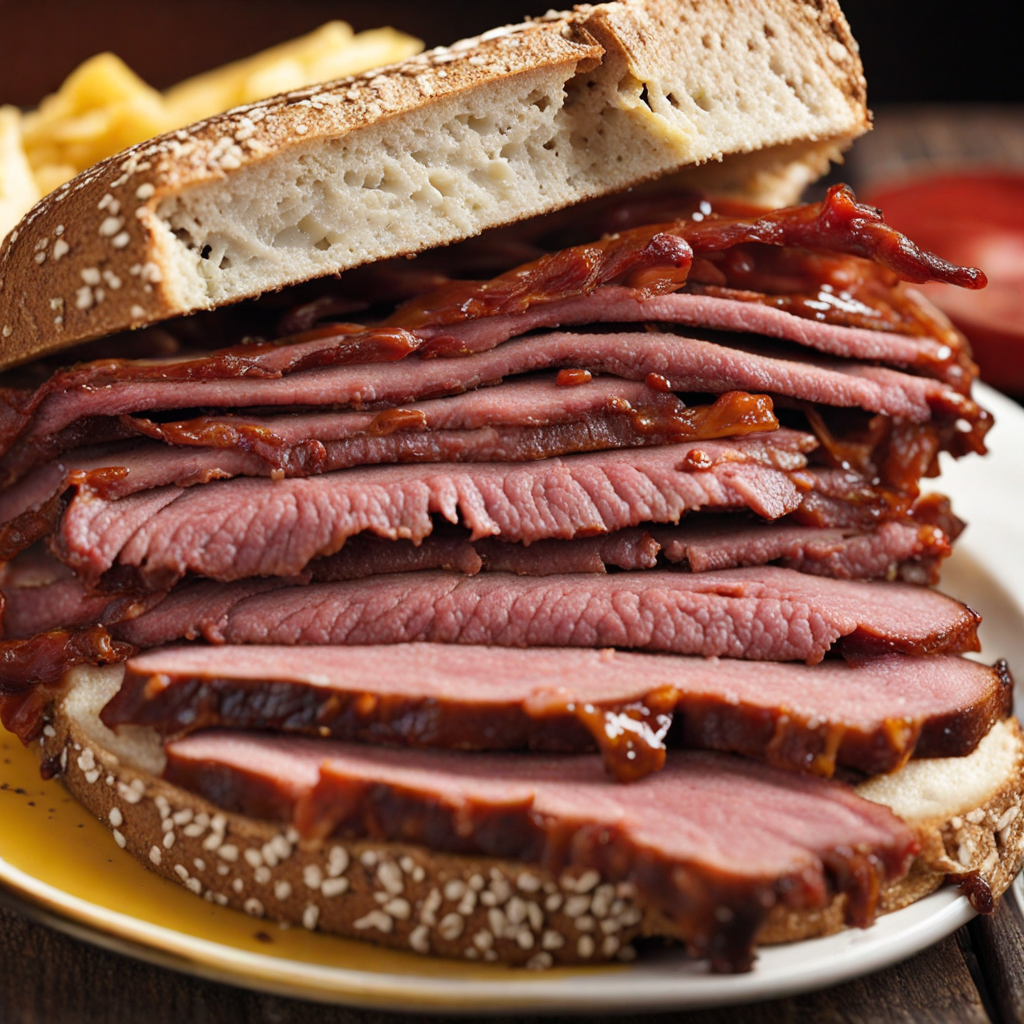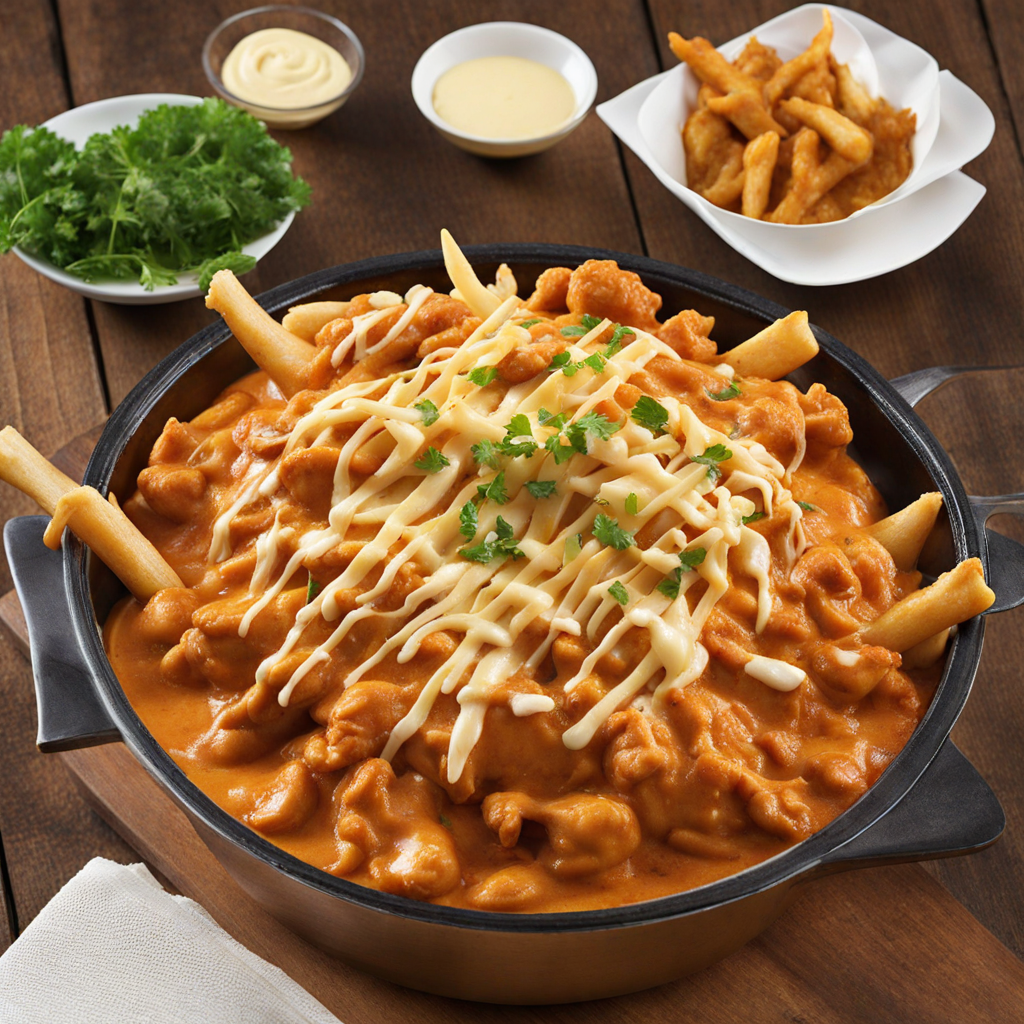Bannock
Bannock is a versatile and hearty bread that has roots in Indigenous Canadian culture and has evolved over time to embrace various regional influences. Traditionally, bannock is made from simple ingredients like flour, baking powder, salt, and water or milk, resulting in a dough that can be baked, fried, or cooked over an open flame. The texture can range from soft and fluffy to crispy and golden, depending on the cooking method used. Its mild flavor makes it an excellent accompaniment to a wide variety of dishes, from savory stews to sweet jams, creating a perfect balance of taste and texture. One of the most delightful aspects of bannock is its adaptability. While the classic version is beloved, modern interpretations have emerged that incorporate different flours such as whole wheat, cornmeal, or even gluten-free alternatives, catering to diverse dietary preferences. Some recipes include ingredients like herbs, cheese, or dried fruits, which infuse the bread with additional layers of flavor. This adaptability is a testament to bannock's enduring popularity across Canada, where it can be found at gatherings, celebrations, and family meals. Culinary enthusiasts often enjoy bannock not only for its taste but also for its cultural significance. It has become a symbol of Indigenous heritage and resilience, often served during community events and gatherings. Discovering bannock means engaging with a piece of history while savoring a dish that is both comforting and nourishing. Whether enjoyed fresh from the oven or as part of a traditional feast, bannock offers a unique taste experience that invites you to explore the rich tapestry of Canadian cuisine.
How It Became This Dish
The History of Bannock: A Canadian Culinary Tradition Bannock, a type of flatbread, holds a cherished place in the culinary landscape of Canada, particularly among Indigenous communities. Its history is rich and complex, woven through the fabric of cultural exchanges, colonization, and resilience. This narrative explores the origins, cultural significance, and evolution of bannock over time. #### Origins: The Birth of Bannock The roots of bannock can be traced back to the Scottish settlers who arrived in Canada during the 18th and 19th centuries. The term "bannock" itself is derived from the Scottish word "bannock," which referred to a type of flatbread made from barley or oatmeal. Scottish immigrants brought their culinary traditions with them, adapting their recipes to the local ingredients available in Canada. However, the story of bannock is not solely one of European influence. Indigenous peoples in North America had their own forms of flatbreads made from various grains and seeds long before the arrival of Europeans. For instance, the Cree and Ojibwe peoples made a similar unleavened bread using ingredients like cornmeal and wild rice. This blend of Indigenous and European influences created a unique food item that evolved into the bannock we recognize today. #### Cultural Significance Bannock is more than just food; it is a symbol of Indigenous resilience and cultural identity. For many Indigenous communities, it has become a staple that embodies the blending of cultural practices and survival skills. Bannock was often made in communal settings, fostering a sense of community and collective identity. It was a food of necessity, providing nourishment during times of scarcity, especially as Indigenous peoples faced the impacts of colonization and loss of traditional food sources. In contemporary Indigenous culture, bannock is often served at gatherings, ceremonies, and celebrations, serving as a bridge between past and present. It is a reminder of heritage and a way to honor traditional practices while adapting to modern life. Bannock has become a symbol of cultural pride, frequently featured in Indigenous cookbooks and culinary events, highlighting its significance in contemporary Indigenous identity. #### Development Over Time As bannock moved through time and space, its preparation and ingredients adapted to various regional contexts. In the early days, bannock was typically made from flour, baking powder, water, and salt. However, over the years, different communities began to incorporate their own local ingredients and techniques. During the fur trade in the 18th and 19th centuries, Indigenous peoples and fur traders shared food traditions and recipes. Bannock was often cooked over an open fire or in a cast-iron skillet, making it an accessible and versatile food item. Some Indigenous groups began to add fats, such as lard or bacon grease, to enrich the flavor and texture. Others experimented with different flours, incorporating wild grains like amaranth or wild rice, reflecting their connection to the land. The introduction of baking powder revolutionized the preparation of bannock, allowing for a lighter, more risen bread. This change became particularly popular among Indigenous communities, leading to the rise of soft, fluffy bannock that is often found today. Cooking methods also evolved; bannock can now be baked, fried, or cooked over an open flame, with each method imparting a unique flavor and texture. #### Regional Variations Bannock's adaptability has led to a variety of regional interpretations across Canada. In British Columbia, for example, bannock is often fried and served alongside salmon or other local delicacies. In the Prairies, it might be baked in the oven and served with stews or soups, reflecting the agricultural roots of the region. In the North, bannock is sometimes made with whole grains and served with traditional foods like caribou or seal, emphasizing the connection to the land and the importance of subsistence hunting and gathering. In urban centers, Indigenous chefs are reinterpreting bannock, creating gourmet versions that incorporate modern culinary techniques and global flavors, thus pushing the boundaries of this traditional food. #### Contemporary Recognition In recent years, there has been a resurgence of interest in bannock, both within Indigenous communities and among the broader Canadian public. Cookbooks celebrating Indigenous cuisine have brought bannock to the forefront, showcasing its versatility and rich history. Bannock-making workshops are increasingly popular, where participants learn not only how to prepare the bread but also the stories and traditions that accompany it. Moreover, Indigenous chefs have begun to gain recognition in the culinary world, using bannock as a canvas to express their heritage and creativity. Events like the "Indigenous Food Sovereignty" movement have emphasized the importance of traditional cooking methods, encouraging a reconnection with the land and the ingredients that define Indigenous cuisine. #### Conclusion Bannock stands as a testament to the resilience and adaptability of Indigenous cultures in Canada. From its origins as a simple flatbread brought over by Scottish settlers to its place as a beloved staple within Indigenous communities, bannock embodies a rich tapestry of history, culture, and culinary innovation. It serves as a reminder of the strength of cultural identity, the importance of community, and the ongoing journey towards reconciliation and understanding. As Canadians continue to explore and celebrate their culinary heritage, bannock remains a powerful symbol of connection—to the past, to the land, and to one another. Whether enjoyed at a family gathering, a community feast, or a gourmet restaurant, bannock is more than just food; it is a story of survival, adaptation, and pride that resonates with many, making it a cherished part of Canada's diverse culinary landscape.
You may like
Discover local flavors from Canada







